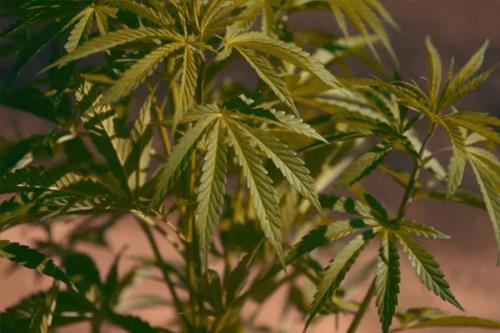Marijuana legalization's effect on real estate in Canada
11/26/2017
| SHARE
Posted in Real Estate News by Vanguard Realty | Back to Main Blog Page

The Ontario Real Estate Association (OREA) will soon publish recommendations to the provincial government that include consumer protections for home owners and home buyers when marijuana has been grown inside of a home.
Under the proposed legislation to legalize recreational cannabis, Canadians will be able to grow four plants in their home at up to 100 centimetres in height, but Ontario realtors are concerned that being able to legally grow marijuana in the home will cause physical damage to the home, negatively impact home values and potentially cause illness for homeowners.
“The concern that Ontario realtors have is that once this becomes legal, you’re going to see a lot more [home marijuana growing] in the province. This means risks to home owners and it also means concerns about disclosure for potential home buyers,” says Tim Hudak, CEO of OREA and former MP for the Progressive Conservative Party of Ontario.
The risks he went on to the list include damage such as mould, electrical hazards, water damage, fire risk and smoke damage. The OREA is currently researching the negative impact that all of these could have, in consultation with groups such as the Canadian Medical Association and the Canadian Association of Chiefs of Police. Once its findings are published, the OREA plans to pass its recommendations on to the Ontario Government and support legislation where residents will need to disclose to potential buyers whether they grew marijuana in their home prior to putting it up for sale.
“Don’t you think you have a right to know if a place was used as a grow-op or how many plants were there? Somebody has to look out for the future buyer of the home,” says Hudak.
But marijuana experts say that when grown properly, the potential for damage to a home from growing marijuana can be reasonably remediated at low cost to the homeowner to the point where the next potential buyer of the home would not even be aware that marijuana plants were ever grown there, especially at the proposed recreational legal limit.
The Allard Case
“It went from Reefer Madness to now it’s Grow Madness,” says Chad Jackett, president of the Cannabis Growers of Canada and owner of Grassroots Medicinal, a marijuana dispensary in Squamish, B.C.
“Now, of course, growing a plant under a light is somehow dangerous, but people have been doing it for years and years and years. Not even just growing cannabis, but growing vegetables and all kinds of things in their home. I think this is an effort on the part of big pharma and a bunch of big agricultural companies to consolidate the industry and in order to do that, you have to push fear through organizations like the Ontario Real Estate Association,”
“But we’ve already had all this propaganda proven down in court. We’ve done a constitutional challenge through the MMAR Coalition Against Repeal, which was the Allard Case.”
MMAR are Canada’s Medical Marijuana Access Regulations and the Allard Case was a 2015 case (Neil Allard et al. v. Canada) arguing that the Marijuana for Medical Purposes Regulations’ elimination of the ability for medicinal marijuana patients to grow their own plants and rely only on dried plants from licensed producers was unconstitutional.
The decision from Justice Michael Phelan upheld the right for Canadian medicinal marijuana users to grow their own plants, but it also dispelled the Canadian Government’s argument that marijuana could not be grown inside a home without causing damage to the home’s structure and putting the health and safety of its occupants and surrounding neighbours at risk.
“A theme that ran through some of the evidence of the Defendant was that there was little or no difference between the risks from an illegal grow-op and that of a properly licensed and code-compliant MMAR site. The statistical evidence does not support the conclusion that an illegal, covert operation would present the same risk as an open, legal operation,” read his decision in part.
John Conroy, lead counsel for the plaintiffs in the case, agrees that marijuana’s perceived ability to cause damage to a home is often overblown and misrepresented.
“A lot of old RCMP and perhaps other police force studies were done during the illegal days when all of these growers took shortcuts, didn’t do things properly and created mould problems. There were more grow rips in those days because of the market” says Conroy.
“We called a lot of fire people to the stand who testified that more fires are in kitchens than are in a marijuana grows and we’re not about to get rid of kitchens.”
The hope is that once marijuana is legal, growers will have no fear consulting with professional electricians, plumbers and horticulturalists to make sure their grow operation complies with fire, safety and health regulations.
“There are instances of people not doing it right under a system that wasn’t even in place,” says Jackett. “These are people who weren’t even medically licensed and are hiding in the black market, so they weren’t going to call an electrician or somebody to do the correct work for them because they feared people would see what they were doing and have them arrested.
“Now when things are legal, you can have someone come in and do all your wiring and other things you need to do and have someone sign off on all these things as safe.”
Even when everything has been implemented correctly and safely, there is still a question when you’re selling your home: do you need to tell potential buyers?
Growing pains
For his part, Hudak says that even though medicinal users can grow legally, OREA’s consultations with fire departments and chiefs of police have revealed that authorities still find plumbing, electrical and fire code violations among the medicinal population.
“We’re not talking tomatoes. We’re talking marijuana plants that require a high degree of humidity, so even four plants could potentially cause damage to a home,” says Hudak. “Marijuana plants are grown with a high humidity, heat lamps and in tight, closed spaces so there’s potential damage that can cause health issues, particularly among seniors or young people with breathing issues due to the mould and fungus that are left behind.”
But growing marijuana is more like growing tomatoes than Hudak thinks. Jason Schut, manager of Enviromold – a mold inspection and removal company – testified during the Allard case that in his view there is no difference between growing 20 marijuana plants and growing 20 tomato plants in an indoor garden, as a proper indoor garden would address any moisture and ventilation issues you may have. As a grower, Jackett agrees, but recommends people grow outdoors.
“I would always recommend building an outbuilding anyways just so you can have everything separate from your actual home. There wouldn’t be any problems growing indoors, but if there was then the issue would be contained within a standalone building,” he says.
Still, given that the legal limit is only four plants, Jackett assures growing right inside your actual living space is very easy.
“You can very easily get some quality LED lights that have very low power consumption and are cool to the touch. You could grow your four plants under those lights no problem in a little grow tent somewhere in your home as long as you have it properly ventilated by having at least a proper dehumidifier in there,” he says.
“The only problem you may find is if someone doesn’t understand you need to vent your humidity or at least have a dehumidifier running that will take the humidity out of the room, so you don’t get a humid environment and your electricity is safe. Beyond that, you don’t really have anything to worry about. With four plants, it’s really nothing.”
The double-edged sword of disclosure
Nevertheless, Ontario realtors would still feel more comfortable if buyers knew what they were walking into.
“Ontario realtors certainly believe that disclosure is an important quality in consumer protection and we’re there to give the best advice to people buying a home and selling a home,” says Hudak.
“Previously, we had supported legislation from Nepean-Carlton MPP Lisa MacLeod for a grow-op registry and Lisa MacLeod did indicate at our Ontario realtor party that she was looking to bring forward a new bill that builds on her previous one around grow-ops, so we’re looking forward to working with Lisa on that.”
Hudak’s concern is that depending what the Ontario government decides around price and distribution, the criminal element and illegal grow-ops may still continue, but Conroy says that shouldn’t be happening.
“If it’s some illegal grower that has just trashed the place, yes, terrible,” says Conroy. “You need to stick it to them, but in the legal market that shouldn’t be happening. Sure, you’ll get the odd person who doesn’t do things right, but generally, people want to obey the law and they want to be able to sell their house later on.”
Plus, there’s a concern among growers that disclosure may prejudice the buyer and make it difficult to sell their home or get fair value for it.
“It prejudices the home value and hinders your ability to sell it. It’s Reefer Madness type stuff. They raise it and cause all these fears on the part of buyers that there may be a problem,” says Conroy.
For Conroy, disclosure is a double-edge sword.
“Part of me says that it’s good to have people disclose so that the homes can be checked if things weren’t done properly and maybe you make a condition that they have to fix anything before sale, but when you put it on the title or make it public like that it does create that whole additional emotional reaction,” says Conroy.
“There are a lot of things that can cause damage to a home. People can cause damage by excessively planting other plants that they’ve grown, but we don’t hear about any efforts in that regard.”
Source:
Home Buyers, Ontario Real Estate News

Thinking of buying or selling a property, or have a question regarding the real estate market? Fill out the form below and we'll get back to you promptly.
